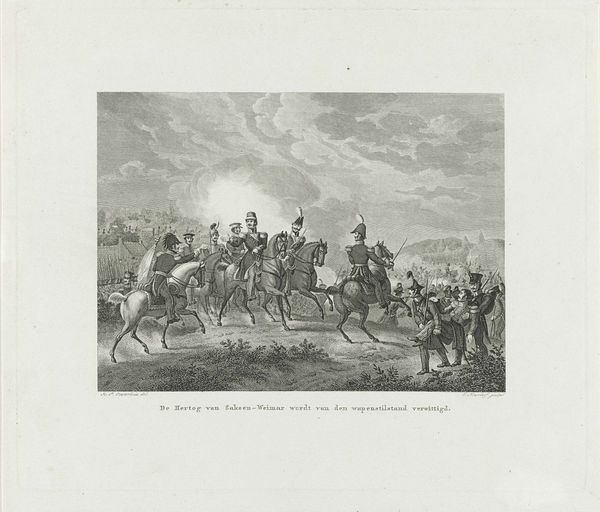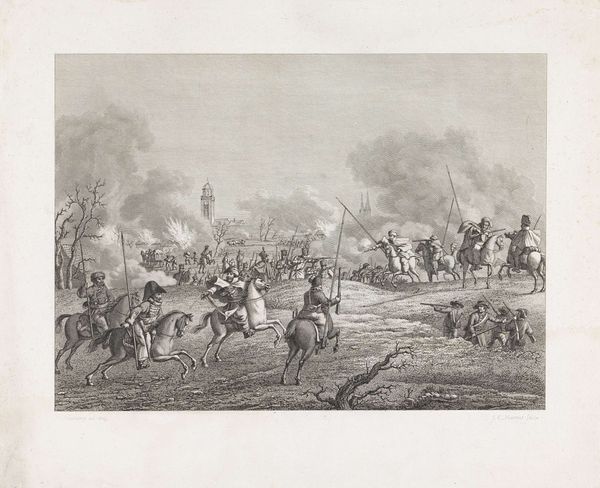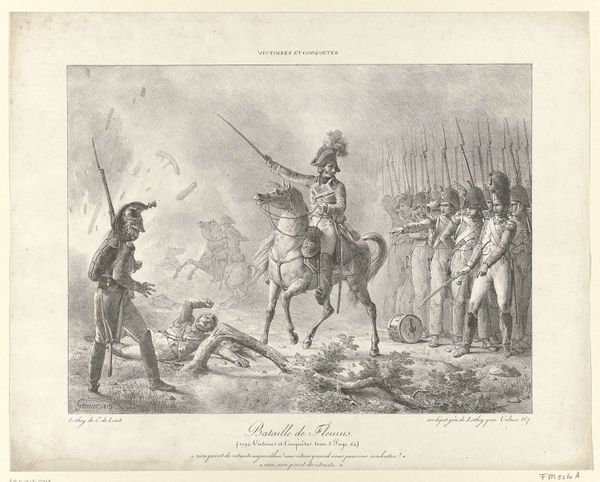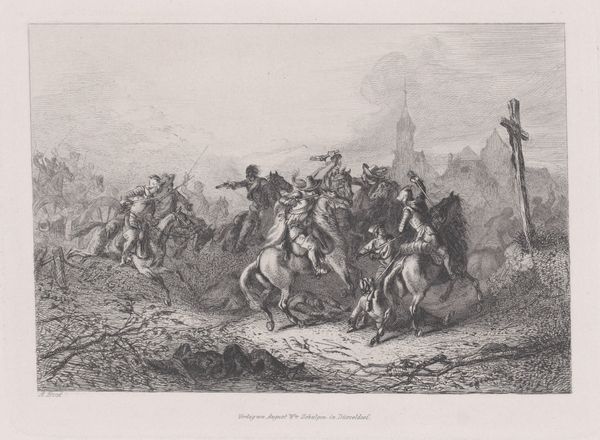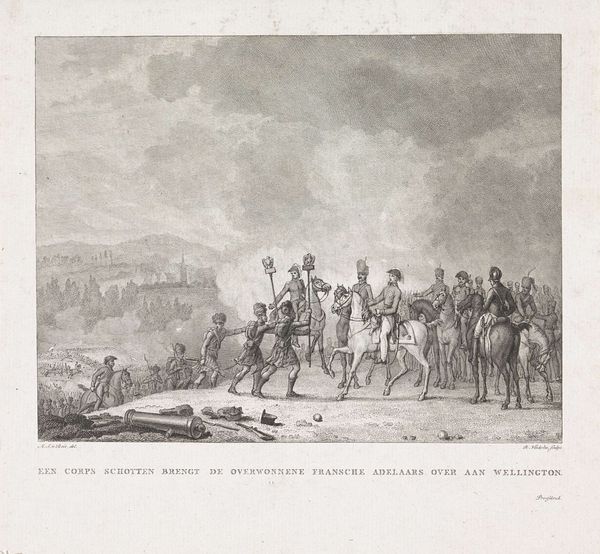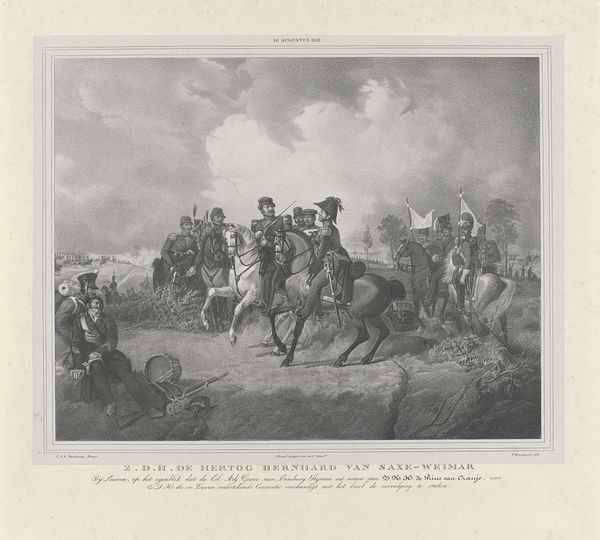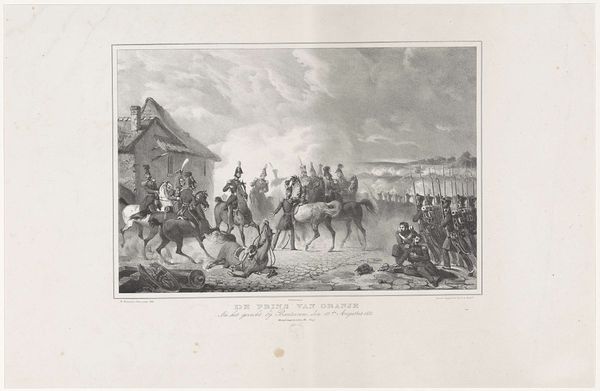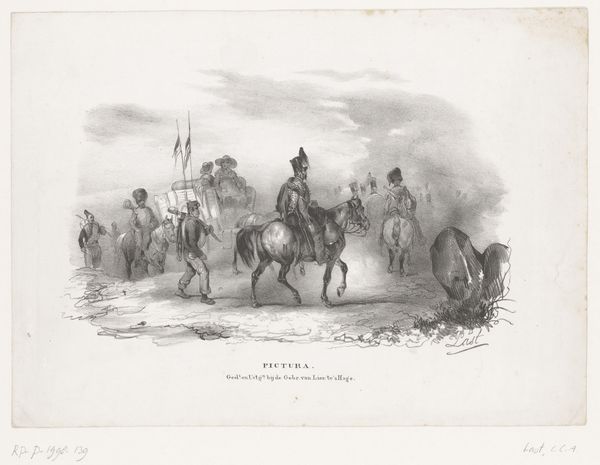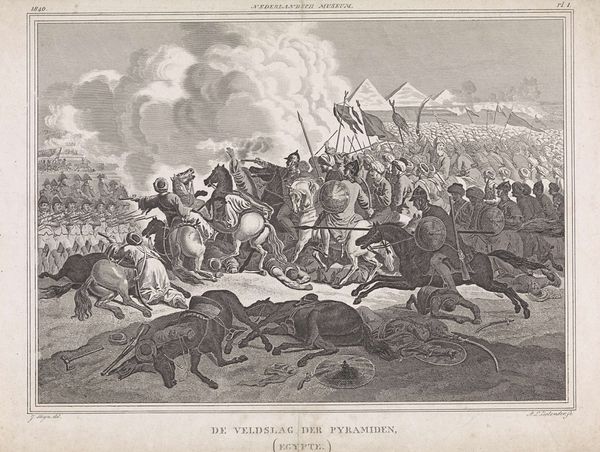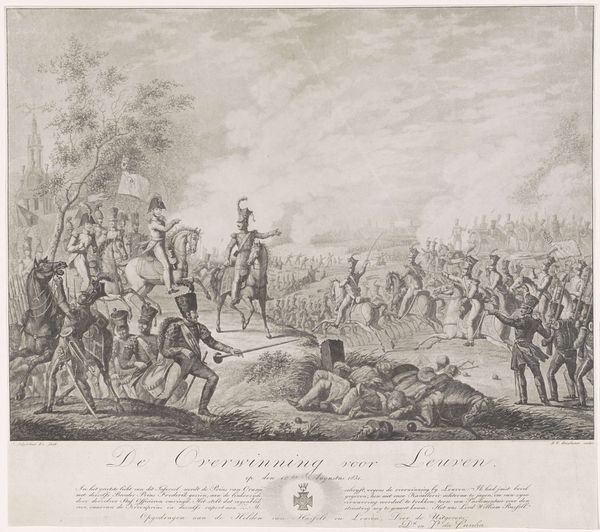
print, etching, engraving
# print
#
etching
#
landscape
#
romanticism
#
history-painting
#
engraving
Dimensions: height 505 mm, width 605 mm
Copyright: Rijks Museum: Open Domain
Curator: Good day, let’s delve into this piece entitled "Wellington tijdens de slag bij Waterloo, 1815," or Wellington at the Battle of Waterloo, 1815. This engraving and etching comes to us from Frederick Bromley, completed around 1837. What is your initial take on this piece? Editor: My breath just hitched—the dynamism, the grit. Even in monochrome, there’s a swirling energy here, a controlled chaos that speaks volumes. A heavy atmosphere that reeks of tension and, frankly, terror. Curator: The romanticism style is palpable, idealizing war yet hinting at its brutality. Consider the print's public function in Britain during this period; such art served to mythologize Wellington and reinforce national pride. It transformed the historical battle into cultural propaganda. Editor: Absolutely, though what really strikes me is how the chaos of battle is concentrated into this foreground drama. The expressions, even with the limits of etching, capture something about facing oblivion. I almost feel sorry for everyone involved—I find myself reaching out. Curator: Bromley indeed was meticulous in depicting military leaders, while the mass of soldiers appear indistinct. The politics are subtle yet very calculated in what details are emphasized versus downplayed. Editor: True, but maybe the indistinct mass represents the everyman lost in war’s grand narrative? I can imagine Bromley obsessing over the musculature of the horses; they embody raw power. Curator: Such powerful imagery often ignores underlying realities. The cost to common soldiers, the long-term social consequences, even the sheer environmental devastation, remains outside this scope of triumphant glory. The lack of location may also give clues on a larger scope of these kind of history-painting styles. Editor: And maybe that's the art’s dark genius? A celebration tinged with undeniable human cost? Art becomes this weird agreement between propaganda and lived memory. A memory that hurts so bad, we wish to celebrate a little triumph as a way to let it be. Curator: Well put. In considering the context surrounding Bromley's "Wellington tijdens de slag bij Waterloo, 1815", we see more than just skillful artistry but observe the cultural shaping power this type of work held. Editor: So as we step away, it sticks in my mind – this potent, poignant snapshot—the beauty, yes, but the undercurrent of sorrow too, an elegy hidden within celebration, and the many shades of grey surrounding such events.
Comments
No comments
Be the first to comment and join the conversation on the ultimate creative platform.
